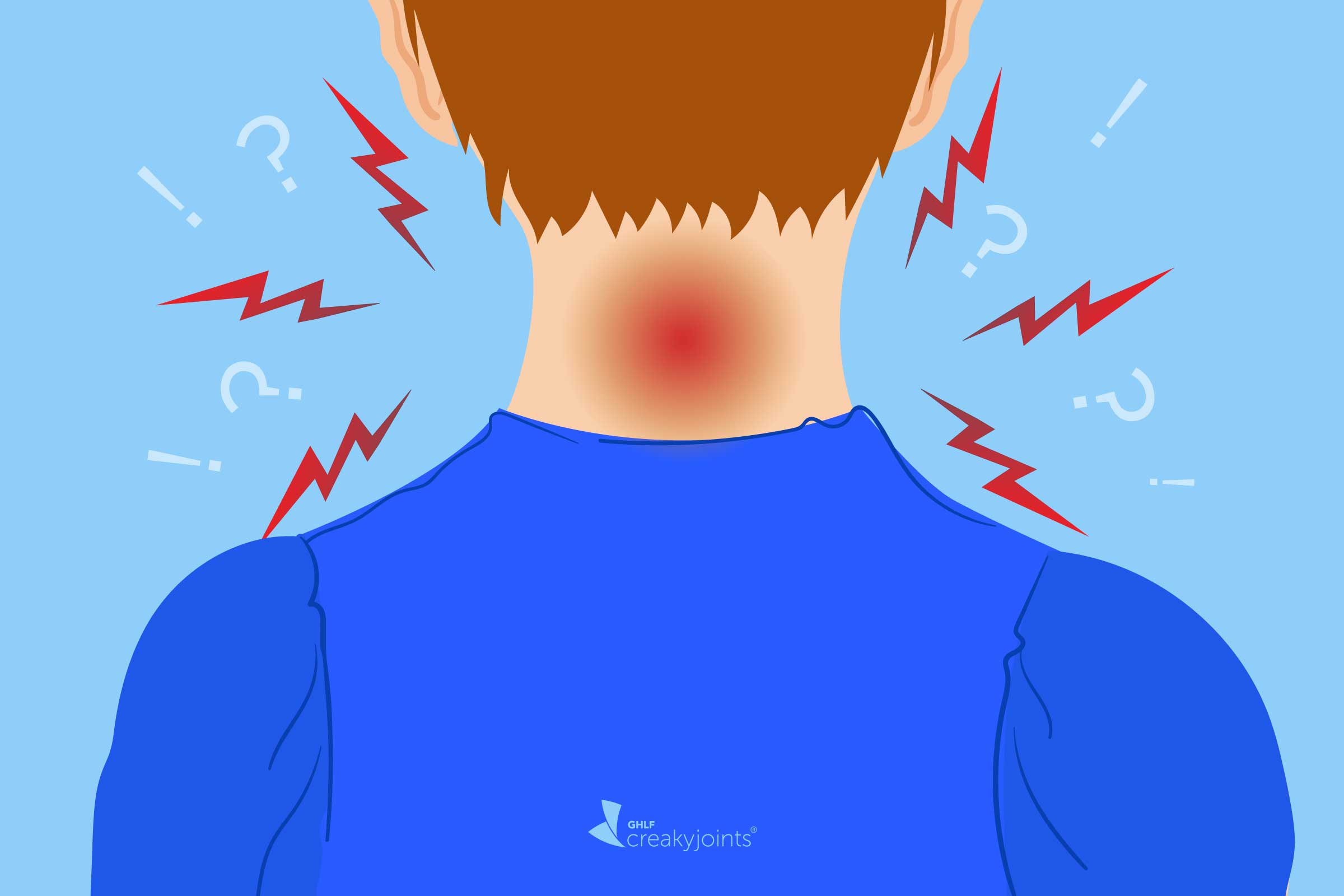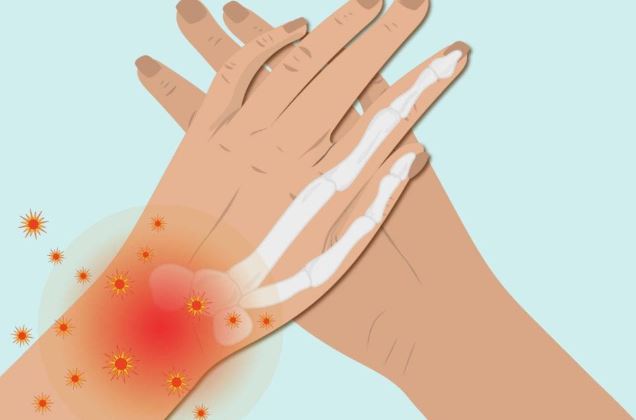Osteoarthritis is the most common and well-known type of arthritis. It’s largely a wear-and-tear form of arthritis that happens as a result of damage to or overuse of a joint, usually over a long period of time. About 30 million Americans have osteoarthritis. You can also have osteoarthritis at the same time as other kinds of arthritis that are inflammation- or immune-related, such as rheumatoid arthritis, gout, psoriatic arthritis, or ankylosing spondylitis.
How Osteoarthritis Affects Your Joints
In osteoarthritis, the cartilage — the smooth, rubbery connective tissue on the end of bones that cushions the joint, helping bones move smoothly and easily — wears down until the bones are painfully rubbing against each other. This cartilage breakdown also causes the bones in the joint to undergo changes, including the appearance of bone spurs. Bone spurs are bony projections that develop alone the edges of bones in the joints, also knowns as osteophytes. Tendons, ligaments, and muscles are also affected and there can be inflammation in the joint.
“OA isn’t just about the cartilage,” says Lisa A. Mandl, MD, MPH, a rheumatologist at Hospital for Special Surgery in New York City, who specializes in the treatment of rheumatoid arthritis, psoriatic arthritis, ankylosing spondylitis, and osteoarthritis. “It is a disease of the whole joint. The ligaments are weak, the tendons are frayed, the muscles are weak.” This generally happens slowly and worsens over time. Weight-bearing joints like the hips, knees, and spine are most vulnerable to osteoarthritis. Other common spots are the hands, wrists, and shoulders.
Osteoarthritis is often thought to be “less serious” than autoimmune forms of arthritis like rheumatoid arthritis. While that may be the case to a certain extent (the systemic inflammation an autoimmune illness like RA can impact organs and systems throughout your body), OA can take a significant toll on how you feel and function. In fact, according to a new study, published in the journal Arthritis & Rheumatology, the “disease burden” is similar among OA and RA patients at the time of diagnosis; but six months into treatment, RA patients often tend fare better. This may be because RA has many disease-modifying drug options, while OA’s treatments tend to focus more on symptom management.
Click Here to Visit the Store and find Much More….
Many experts believe that anyone who lives long enough will eventually develop some degree of osteoarthritis in some joints. Still, osteoarthritis isn’t caused by any one specific risk factor. Rather, certain risk factors, as outlined below, make you more susceptible to developing osteoarthritis in one or several joints.
An Overview of Common Osteoarthritis Risk Factors
Osteoarthritis risk factor: Age
Age is the strongest non-modifiable risk factor for OA, says Dr. Mandl. Approximately 14 percent of adults aged 25 and older have symptomatic OA of at least one joint while at least 34 percent of adults aged 65 and older have OA. Worldwide estimates are that 10 percent of men and 18 percent of women aged 60 years old and over have symptomatic OA.
The reason behind this risk for OA increasing with age aren’t fully known. Possible causes could be loss of normal bone structure, overuse of joints over time, and increased stiffness of ligaments and tendons. “It’s just general life experience over time,” says Christopher Collins, MD, an attending rheumatologist and associate program director of the rheumatology division at MedStar Washington Hospital Center and an associate professor of medicine at Georgetown University Medical Center in Washington, D.C. “It’s like a car. After a while, some of the parts start to wear down.”
Osteoarthritis risk factor: Sex
Sex plays a role in osteoarthritis risk. Yes, both women and men get OA. But it’s more common in men until age 45. After that age, osteoarthritis is more common in women, according to the National Institute on Aging.
The risk of OA by sex also depends on the joints. Knee and hand osteoarthritis are more common in women than men; the frequency of hip OA is the same in women and men, says Dr. Mandl. She says that it’s unknown for sure why this happens. It may be that force hits the knee and body differently in women compared to men. Previously, researchers had thought that it was because men and women experienced stress on the joints at different ages.
Newer research has found a connection between estrogen and joint health. A report in the Journal of Mid-Life Health found that menopause is associated with the onset and progression of OA in women, which may explain why OA affects older women more commonly than older men. Still, Dr. Mandl stresses that this link is unclear and hard to prove.
Osteoarthritis risk factor: Joint injuries
An injury related to playing sports, a fall, a vehicle accident, or other physical trauma can cause OA in adults of any age. Sports-related knee trauma, such as a strain or tear of the ACL (anterior cruciate ligament), has been linked to an increased risk of developing knee OA, research shows. In fact, Dr. Mandl says that half of people who have ruptured their ACL will have severe OA within a decade. In fact, any kind of surgery to the knee increases the risk of OA down the road, she says. Even joint-related injuries that happened years ago and seemingly healed can increase your risk of developing osteoarthritis. Common injuries that can lead to OA include torn cartilage, dislocated joints, and ligament injuries.
The onset of osteoarthritis can also be linked to a repetitive activity that damages the joints like operating a jackhammer with your hands or sitting on your knees while laying bricks, says Mark C. Genovese, MD, the James W. Raitt professor of medicine and director of the rheumatology clinic in the division of immunology and rheumatology at Stanford University Medical Center in Palo Alto, California.
Osteoarthritis risk factor: Weight
Your weight is the biggest modifiable risk factor for developing osteoarthritis, says Dr. Mandl. Excess weight places additional stress on weight-bearing joints, especially your knees and hips, she says. A report in Obesity Reviews found that losing 10 pounds can help manage OA and lead to improvement in symptoms, pain, function, and quality of life.
“Even losing five pounds can make a difference,” says Dr. Mandl. “The heavier you are, the more likely you are to develop knee OA and for it to progress and become more severe. It’s never too late to lose weight.” Fat tissue also produces proteins that can cause harmful inflammation in and around your joints. Being overweight also can speed the progression of the disease on weight-bearing joints like knees, feet, and lower back, says Dr. Genovese.
Click Here to Visit the Store and find Much More….
Osteoarthritis risk factor: Occupation
People who do certain activities for hours may be more likely to develop stiffness and joint pain. Activities include repetitive bending, kneeling, and squatting. Joints commonly affected by this include the hands, knees, and hips. The mechanism for the association remains unclear, though joint loading (force on a wearing-bearing joint during activity) and repetitive damage may be a factor. A paper in the journal Best Practice & Research in Clinical Rheumatology found — not surprisingly — that doing heavy manual work is a risk factor of osteoarthritis. Researchers from the United Kingdom found that those with the highest risk have worked in agriculture and farming for 10 or more years.
Osteoarthritis risk factor: Family history
OA tends to run in families, especially if you have genetic joint defects. You’re more likely to have osteoarthritis symptoms if your parents, grandparents, or siblings have the condition. Researchers don’t know why OA runs in families. While genetics are a risk factor, no one gene has been identified as causing the condition. “We believe that there is a large genetic component with the development of OA,” says Dr. Genovese. “But there is not a single gene association the way you might see with other diseases.”
Osteoarthritis risk factor: Bleeding problems
Though they’re not common, medical conditions that involve bleeding near a joint can cause osteoarthritis to worsen or new symptoms to develop. If you have hemophilia (where blood doesn’t clot normally) or avascular necrosis (the death of bone tissue due to a lack of blood supply), you may have symptoms associated with OA. “Blood is irritating and really destructive to the joint,” says Dr. Mandl.
Osteoarthritis risk factor: Other types of arthritis
If you have other forms of arthritis, such as gout or rheumatoid arthritis, you’re more at risk for developing osteoarthritis too. RA is an autoimmune disease in which your immune system mistakenly attacks the joints. This triggers inflammation that thickens the synovial tissue lining the inside of the joint, causing swelling and pain in around the joints. Gout is a painful and acute onset of arthritis caused by the buildup of uric acid (a normal waste product in your body) in the blood. When uric acid is elevated in the blood, it can accumulate in your joints and trigger an inflammatory response that causes severe pain and swelling.
Osteoarthritis risk factor: Certain conditions
People born with certain diseases or health problems are more likely to develop OA. Examples include increased joint laxity (being double-jointed), some dysplasias (abnormal growths of bone and cartilage), and Paget’s disease (a type of bone inflammation).
Other conditions that can lead to OA include peripheral neuropathies (nervous system disease) and neuromuscular disorders that put abnormal stress on the joint. Certain metabolic diseases like diabetes and hemochromatosis (where your body has too much iron) make you prone to OA as well as bone deformities like those born with malformed joints or defective cartilage.
Getting Diagnosed with Osteoarthritis
If you suspect your joint pain or other symptoms could be OA, and you have some osteoarthritis risk factors (or even if you don’t), see your primary health care provider. You may need a referral to a specialist such as a rheumatologist or orthopedist for further testing and treatment.

Click Here to Visit the Store and find Much More….
For More Information Related to Fibromyalgia Visit below sites:
References:
Fibromyalgia Contact Us Directly
Click here to Contact us Directly on Inbox
Official Fibromyalgia Blogs
Click here to Get the latest Chronic illness Updates
Fibromyalgia Stores









